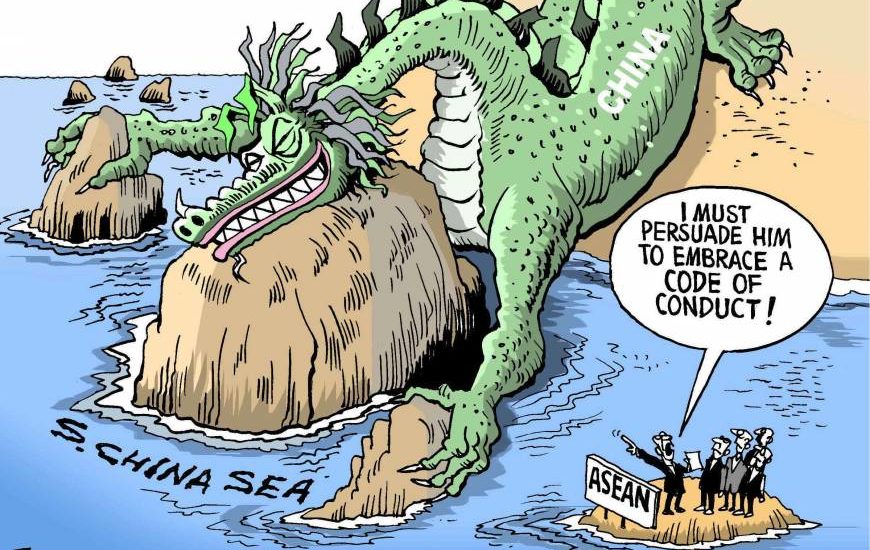- March 14, 2019
- Posted by: Prerna Chahar
- Category: Featured, GLOBAL GOVERNANCE & POLITICS, INTERNATIONAL AFFAIRS, Latest Work

China’s military reform and planning have long been a complicated issue as it contrasts the Chinese facet of ‘peaceful rise’. This facet has important regional and global implications.
Though President Xi’s “China Dream” speech of ‘national rejuvenation’ begets four different dimensions of “China Dream”: Strong China, Civilized China, Harmonious China, and Beautiful China, it is the pronounced “Strong China” dimension (economic, diplomatic & military) that raises the stakes for President Xi Jingping’s leadership in China and the world. The scepticism that follows China’s ‘national rejuvenation’ dream is its sweeping long-term military organizational reforms that portray strong armed forces advancing China’s interests, averting other countries’ actions to damage those interests, and expanding its footprints in the Asian region through historical sovereignty claims. This raises an important question as to how China will adhere to its policy of ‘peaceful rise’ with ambiguity surrounding its military modernization?
For the past two decades, China has continued the trend of booming its military capabilities to challenge the US military primacy and coerce the rival claimants in the Western Pacific. In Asia, China leads in military spending, being the second largest spender globally after the United States. China’s recent transition of reducing its military troops by half (retrenching three lakh troops) and significantly advancing its navy and air force marks an unprecedented shift to modernise People’s Liberation Army (PLA) in a comprehensive manner.
At a time of economic slowdown, China is continuing to increase its military expenditure at double-digit rates. In March 2018, during the opening of the 13th Annual Parliament, Beijing declared to increase its military spending to U.S.$175 billion for the year 2018, which marked an unprecedented 8.1 percent rise from 2017 and 5.8 percent from 2008. Siemon Wezeman, senior researcher at SIPRI’s AMEX programme noted: “the tensions between China and many of its neighbours continue to drive the growth of China’s military spending in Asia”.
The rise in China’s defence budget signifies the “coordinated development of national economic and defence construction” which is the second fundamental principle of Chinese military modernization. This principle of “coordinated development”, found in China’s National Defense Policy White Paper of 1998, has since been repeated constantly thereafter. The first principle, as a matter of fact, is “absolute loyalty of the armed forces to the Communist Party”. Furthermore, in November 2018, at the 19th Party Congress, President Xi charted out three-step military advancement strategy with major breakthroughs to be achieved by the year 2020, 2035, and 2050.
The aim is to develop asymmetrical capabilities that can deter or defeat the adversary and can counter any potential third-party intervention during a major conflict. For example, China’s Anti Access/Area Denial (A2/AD) strategy puts China at an advantageous position vis-à-vis the US in the face of any potential regional security threats that it might encounter. The 2017 annual report to Congress on Military and Security Developments Involving the PRC stated, China’s military reforms “seek to enhance the People’s Liberation Army’s (PLA) ability to conduct joint operations; improve its ability to fight short-duration, high-intensity regional conflicts at greater distances from the Chinese mainland; and strengthen the CCP’s control over the military”. As the Chinese military spending trend is likely to continue, it will significantly give rise to the modernization of conventional weapons and deployment of military personnel, making the region further volatile.
China’s aggressive military modernization, provocative military build-up and extension of its overreach in East and South China Sea are nothing but a projection of China’s belligerent behaviour, as opposed to the concept of so-called “peaceful rise”. This in effect contradicts the acme of “peaceful rise” (heping jueqi) that has long been engineered by the Chinese leadership since early 1990s.
The idea of “China’s peaceful rise” first propounded by Chinese senior policy advisor Zheng Bijian, was thought to be too confrontational by the Chinese ideologues and political analysts. They expressed concern over using the term “rise” as it implies attaining super-power status and intimidating the small powers in the region. Therefore, President Hu Jintao preferred using the term “peaceful development” as an alternative. Whether using the term “peaceful rise” or “peaceful development” the underlining idea has remained the same to assure that China becomes the regional as well as the global player.
Indeed, China’s increasing military expenditure and growing influence, belligerent or peaceful is a serious strategic challenge for other nations. Its military modernization with rapidly expanding prowess would add to a growing sense of apprehension in the region. China’s ambition to lead political and economic engagement in Asia and the world has also alarmed Washington and other major powers. In this respect, it is clear that regional countries, as well as the US, cannot ignore the “sleeping giant”-China anymore. As the “sleeping giant” is wide awake, there is the growing realisation that by its huge military spending and bellicose behaviour, China is responsible for regional flux, apprehensions and instability.
The opinion was originally published at KIIPS.
